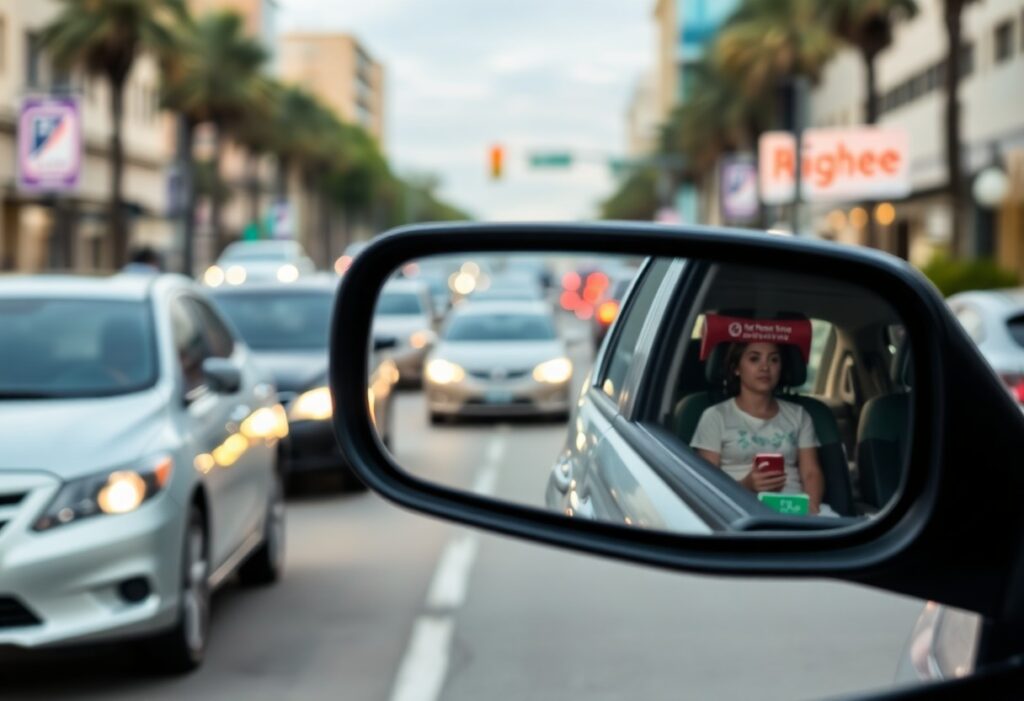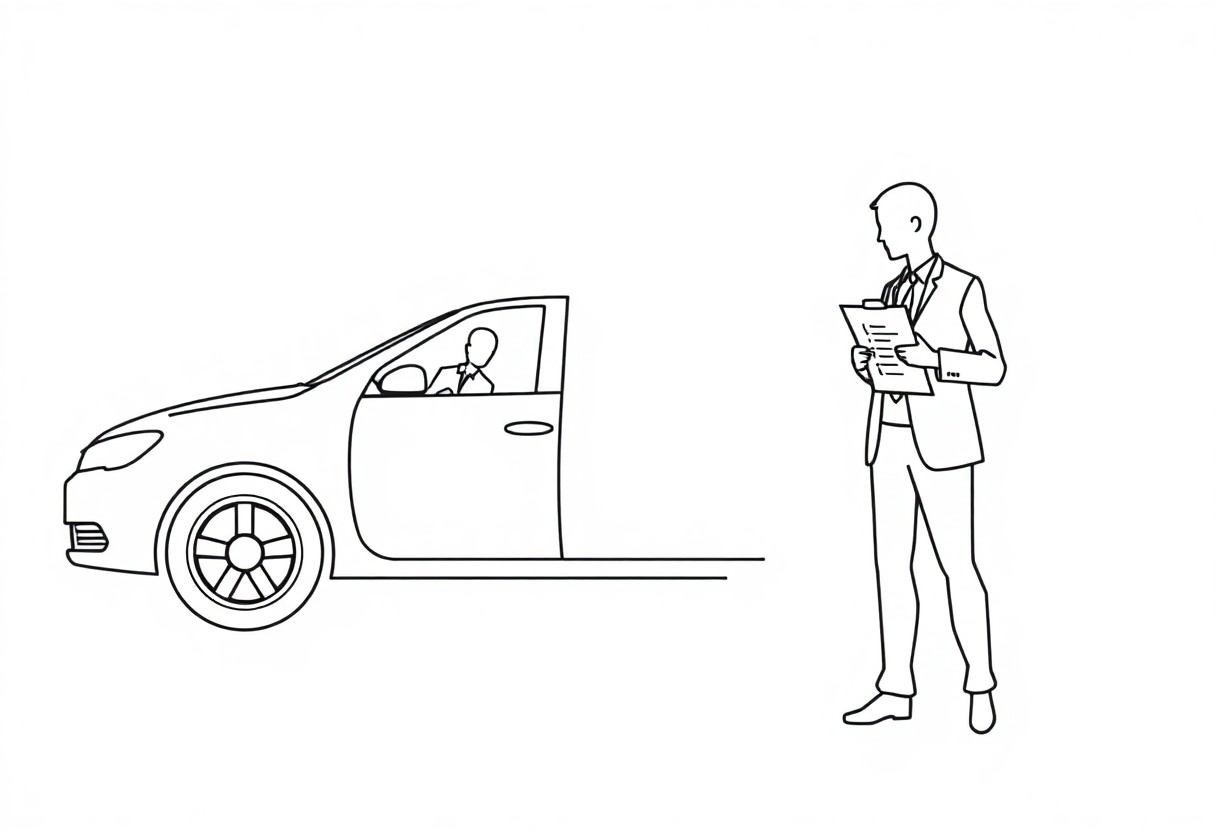Accidents involving rideshare vehicles can happen when you least expect them, leaving you vulnerable to unforeseen injuries and financial burdens. While the convenience of ridesharing is appealing, it’s crucial to recognize the hidden risks that may affect your safety and security. Understanding these dangers can empower you to make informed decisions about your transportation choices and help safeguard yourself against potential legal and medical challenges. This post will examine into the key factors and statistics surrounding rideshare accidents in California, enabling you to take precautionary steps for your well-being.
Key Takeaways:
- Insurance Liabilities: Understanding the complex insurance policies involved in rideshare services can impact compensation after an accident.
- Rideshare Driver Backgrounds: Rideshare drivers may have varying levels of experience and driving records, which can increase the risk of accidents.
- Legal Complications: Filing claims can involve multiple parties, leading to potentially lengthy legal battles and complications in obtaining due compensation.
Understanding Rideshare Accidents
Definition and Types of Rideshare Services
To navigate the complexities of rideshare accidents, it is imperative to first understand what rideshare services entail. Rideshare services are platforms that connect passengers with drivers through a mobile application. These services have transformed the transportation landscape, offering convenience and flexibility to users. The major types of rideshare services include:
| Type | Description |
| Traditional Ridesharing | Users share rides with others traveling in the same direction. |
| Private Rides | Users book a vehicle exclusively for themselves or their group. |
| Pool Rides | Multiple passengers share a ride, splitting the fare. |
| Luxury Services | High-end vehicles for a more premium experience. |
| Delivery Services | Rideshare companies also provide food and package delivery. |
Any rideshare experience, while convenient, can expose you to unforeseen risks, especially in the event of an accident. Understanding these various types can help you better assess your potential exposure on the road.
Common Causes of Rideshare Accidents
Before you launch on your next rideshare journey, it’s vital to be aware of the common factors that contribute to accidents involving rideshare vehicles. These accidents can arise from various situations, including distracted driving, speeding, or adverse weather conditions. Drivers, whether professional or casual participants, may often be under pressure to maximize their earnings, which can lead to unsafe driving practices.
Indeed, the riding experience can be impacted by issues such as driver fatigue, which occurs when a driver has worked long hours without sufficient rest. Another significant factor is inadequate training of rideshare drivers regarding traffic laws and safe driving protocols. Passenger behavior can also play a role; if you engage in distracting conversations or activities, it could affect the driver’s focus. Moreover, poor vehicle maintenance can increase the likelihood of mechanical failures during rides. Understanding these causes enables you to make informed decisions and take necessary precautions while using rideshare services.
Legal Implications for Rideshare Drivers and Passengers
If you find yourself involved in a rideshare accident, it’s necessary to understand the legal landscape surrounding this unique industry. You may be uncertain about who is liable in the event of an accident, whether you are a driver or a passenger. Rideshare companies like Uber and Lyft have distinct guidelines that shape the liability for accidents that occur while their drivers are on duty. In many cases, the liability may not solely fall on the driver but can extend to the rideshare company, depending on specific circumstances such as whether the driver was actively transporting a passenger, waiting for a ride request, or offline.
Liability in Rideshare Accidents
Behind the scenes, the issue of liability in rideshare accidents can become quite complex. You should be aware that if you are a passenger, you typically hold a stronger position in claiming damages because rideshare companies are required to maintain a level of insurance that covers riders during their trips. Conversely, if you are a driver, determining liability can be more challenging, especially if you are found to be at fault. Insurance policies may differ based on whether you were logged into the app and actively transporting a passenger or simply waiting for a request, which can affect your ability to receive compensation.
Insurance Coverage Considerations
Liability in the context of rideshare accidents brings to light significant insurance coverage considerations. As a driver, you need to understand that rideshare companies provide a specific level of coverage depending on what you were doing at the time of the accident. When you are logged into the rideshare app and waiting for a passenger, the insurance coverage is different than when you are actively transporting a passenger; hence, it is vital to be aware of these variances. If you are operating your own vehicle while not logged into the app, your personal insurance policy will apply, which may lead to all sorts of complications if you were involved in a crash.
Consequently, both drivers and passengers should ensure they are adequately protected by checking their insurance policies and understanding their rights. Not only is it important for you to comprehend what type of coverage applies to your situation, but it is equally important to keep records of your rideshare activity and any pertinent communications with the rideshare company. Having this information readily available can be invaluable should you need to navigate the complexities of a rideshare accident and seek compensation for any damages incurred.
The Impact of Rideshare Accidents on Victims
Not only do rideshare accidents pose significant risks at the moment of the collision, but their impact can also linger long after the event. Physical injuries resulting from these accidents can range from minor bruises to severe trauma, such as broken bones, spinal injuries, and traumatic brain injuries. Even if you feel fine immediately after the accident, it is important to seek medical attention, as some injuries may not become apparent until days or weeks later. If left untreated, these injuries can lead to chronic pain and long-term disabilities that can drastically change your quality of life.
Physical Injuries and Long-term Effects
Effects on your body can be profound and multifaceted. You may experience ongoing medical treatments, rehabilitation, and financial burdens that stem from your injuries. In addition to physical pain, there is a strong possibility of incurring high medical costs and lost wages due to your inability to work, amplifying the stress of an already challenging situation.
Emotional and Psychological Consequences
For many victims, the aftermath of a rideshare accident also brings a slew of emotional and psychological challenges. You might grapple with anxiety and fear of traveling or getting into another vehicle. Such distress can interfere with your daily activities and lead to heightened stress levels that prevent you from moving forward with your life.
Indeed, emotional trauma can manifest in various forms, including PTSD, depression, and lingering anxiety. The fear of future accidents can cause you to avoid ridesharing altogether, which in turn restricts your mobility and independence. It is critically important to address these emotional repercussions by seeking therapy or counseling, as your mental health is just as valuable as your physical recovery. Processing these feelings not only helps you heal but also reassures you that it is possible to regain control over your life after such a traumatic event.
Preventative Measures for Rideshare Users
Tips for Safe Rideshare Practices
Now, as a rideshare user in California, it is necessary to take proactive steps to ensure your safety during every trip. By adopting a few simple practices, you can significantly reduce your risk of being involved in an accident. Here are some practical tips to keep in mind:
- Always check the driver’s details and vehicle information before getting in.
- Share your trip status with a trusted friend or family member for an added layer of security.
- Choose a well-lit pickup location that is safe and familiar.
- Wear your seatbelt and encourage others in the vehicle to do the same.
- Stay alert and avoid distractions while in the rideshare vehicle.
Knowing these simple yet effective strategies can provide peace of mind and help ensure a safer experience while utilizing rideshare services.
Understanding Your Rights as a Passenger
Practices surrounding passenger rights are often overlooked, but they play a vital role in navigating rideshare experiences safely. As a passenger, you have the right to a safe, comfortable ride and to hold the driver and rideshare company accountable if things go wrong. If you’re involved in an accident, you have the right to seek compensation for your injuries, property damage, and any other related losses. Familiarizing yourself with your rights can empower you to take appropriate action in cases of negligence or misconduct.
Further, it’s necessary to understand that if you are injured in a rideshare accident, California law allows you to pursue claims against both the driver and the rideshare company. This means you have potential avenues for compensation from the driver’s insurance or the rideshares insurance policy, which may provide higher limits. Your rights as a passenger encompass the expectation of safety and accountability, and by knowing them, you can effectively advocate for yourself in any unfortunate situations that may arise.
Rideshare Regulation in California
Overview of Current Regulations
Unlike traditional taxi services, rideshare companies in California operate under a set of regulations that aim to ensure passenger safety and driver accountability. You should be aware that these regulations require rideshare drivers to undergo background checks, maintain proper insurance coverage, and adhere to specific vehicle maintenance standards. This legal framework helps protect you from potential risks associated with rideshare transportation, but it is not without its flaws. The complexity of these regulations may leave you vulnerable if you are involved in an accident and unaware of your rights and the company’s responsibilities.
Proposed Changes and Law Impact
Regulations surrounding rideshare services are constantly evolving, and lawmakers are considering several changes intended to enhance passenger safety. You may want to pay close attention to these proposed amendments, as they could introduce more stringent licensing requirements for drivers and stricter insurance mandates. These changes aim to consolidate accountability and ensure that rideshare companies are adequately protecting you while you travel. However, not all proposed regulations have support, and debates over driver classification and employment status continue to create uncertainty in the industry.
Hence, as the regulatory landscape changes, it is vital for you to stay informed about how these shifts may impact your experience as a rideshare passenger. Proposed changes could lead to improved insurance coverage for riders, providing you with enhanced security in the event of an accident. However, you must also be cautious about potential changes that may affect your rights. By understanding current regulations and proposed changes, you can protect yourself better and make informed decisions when using rideshare services in California.
Emerging Trends and Statistics
Once again, the landscape of rideshare services in California is evolving, and it’s crucial for you to stay informed about potential risks and emerging trends. The continuous growth of rideshare companies like Uber and Lyft has transformed the way people commute, but it has also raised new safety concerns. As more drivers and passengers share the road, the number of rideshare accidents is on the rise. Understanding these changing dynamics can help you assess your vulnerability to accidents and take actionable steps to protect yourself while using these services.
Recent Data on Rideshare Accidents in California
By analyzing recent statistics, it becomes clear that rideshare accidents present an alarming reality. Reports indicate a significant surge in the number of reported rideshare-related collisions over the past few years, with studies linking this increase to the sheer volume of rideshare vehicles on California’s roads. Moreover, data suggests that rideshare drivers, often under pressure to meet ride quotas, may engage in risky driving behaviors, which can lead to more incidents. Knowing these facts can empower you to make safer choices when ordering a rideshare.
Future Directions of Rideshare Services
Behind the scenes, companies are exploring innovative approaches to improve safety for both drivers and passengers. Initiatives such as enhanced driver training programs and technology solutions, like advanced in-app safety features, are being implemented to mitigate the risks associated with rideshare services. These measures aim to create a safer environment for you as a passenger, reducing the likelihood of accidents and instilling confidence in using rideshare options.
With the industry’s focus on safety innovations and the potential rise of autonomous vehicles, the future of rideshare services is looking to address many of the current safety challenges. You may find that improved monitoring systems and increased regulation will help reduce accident rates and ensure better driver accountability. However, it’s crucial to stay informed and proactive regarding your safety. As these services evolve, you must remain vigilant and aware of the inherent risks still present, even as technological advancements aim to reduce them.
To wrap up
Following this exploration of rideshare accidents in California, it’s evident that while these services provide convenience, they also introduce a range of hidden risks. You must remain vigilant when using rideshare apps, as the potential for accidents and their subsequent legal complexities can have significant implications for your safety and well-being. Understanding your rights, the responsibilities of drivers, and the nuances of insurance policies is vital to navigating this evolving landscape effectively.
Additionally, being informed about the common causes of rideshare accidents can empower you to make safer choices when using these services. Whether it’s choosing a reputable rideshare platform or being mindful of your surroundings during your ride, proactive measures can help reduce your risk. Ultimately, prioritizing safety and staying informed can enhance your experience in ridesharing while safeguarding your personal interests on the road.












